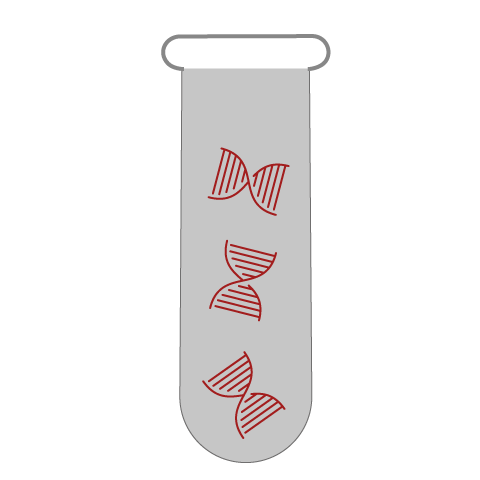The main characteristics of the liquid biopsy:
-
minimal examination invasiveness
-
primarily applicable for advanced stages of cancer
-
the need for a reliable methodology with high sensitivity and specificity for DNA mutation detection


According to the latest scientific findings, tumors release their DNA into the bloodstream of patients, which is specific and characteristic. This DNA is referred to as circulating tumor DNA (ctDNA) and consists of short DNA fragments that correspond to the DNA in the tumor.
It has been shown that in most patients who have had cancer, arising metastases can be diagnosed using liquid biopsy. Periodic monitoring of ctDNA levels in plasma thus increases the probability of early detection of cancer relapse in patients undergoing surgery and/or cancer treatment, thus allowing for personalized monitoring of these patients.
In general, liquid biopsy as a newly emerging field with fascinating growth potential, is very likely to fundamentally change modern medicine from diagnostics to therapy.
The presence of ctDNA in blood or more precisely blood plasma of the patient can be proved by detecting the particular DNA mutation that had been found in the patient´s tumor tissue. Therefore, to detect ctDNA, it is necessary to know which mutation the tumor contains (i.e. at first to examine the tumor tissue, e.g. the post-operative sample) and then search for this particular mutation in the circulating DNA of the blood plasma.
The detection of a relevant mutation in the plasma then indicates the presence of ctDNA released from the tumor since the non-malignant cells do not contain the mutation. There are two steps to analyze mutations. In the first step, a set of mutations most commonly occurring in a given type of tumor (usually 5–15 regions located in 2-8 genes) is examined. In the case of a negative detection, a more comprehensive analysis of about 200 genes is conducted.
Advantages of liquid biopsy
The main advantage of this examination is its simplicity. As a non-invasive examination, it only represents the collection of peripheral venous blood of the patient with the subsequent genetic analysis.
Limits of liquid biopsy
CtDNA is not detectable in all patients, the success of its detection depends mainly on the stage of the disease characterized by the level of tumor growth or spreading into its surroundings, into the surrounding lymph nodes and possibly the presence of distant metastases. Furthermore, ctDNA detection depends on the cancer type and the sensitivity of the laboratory method used.
